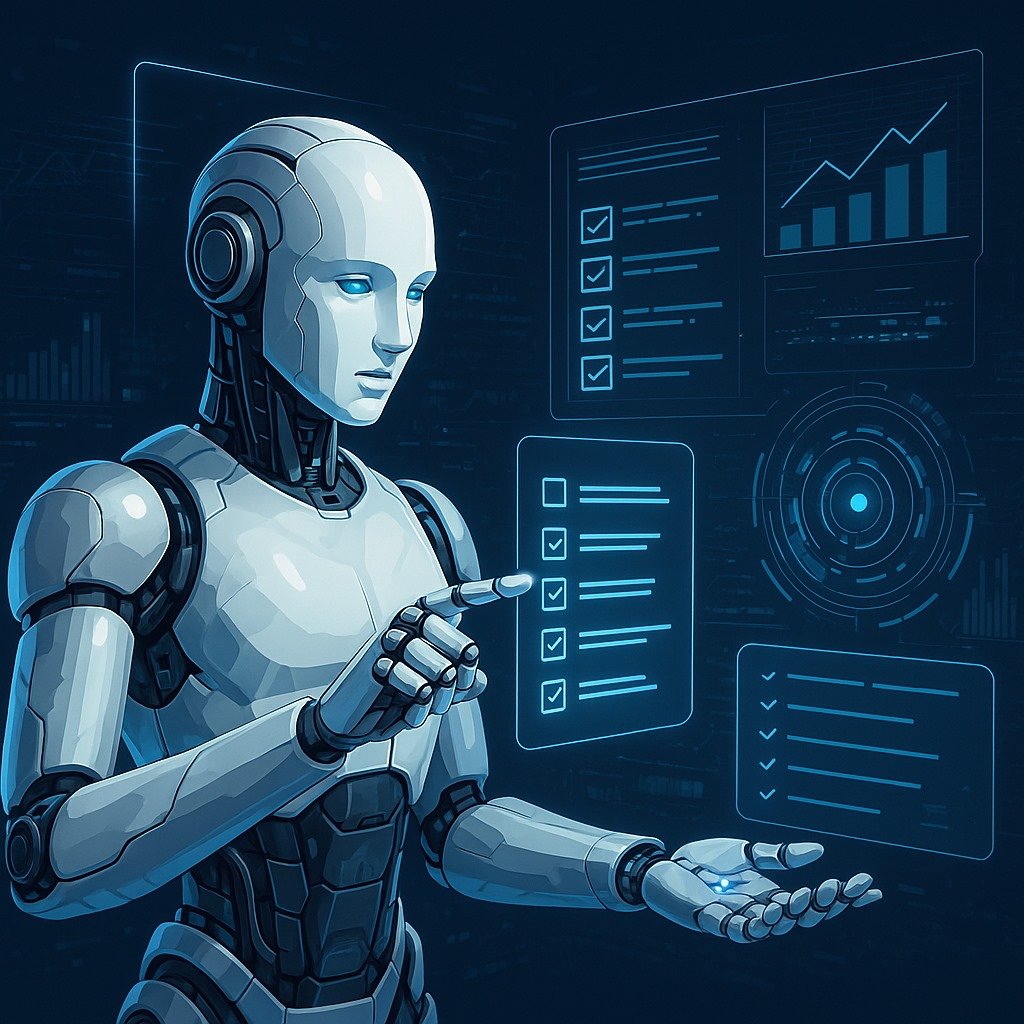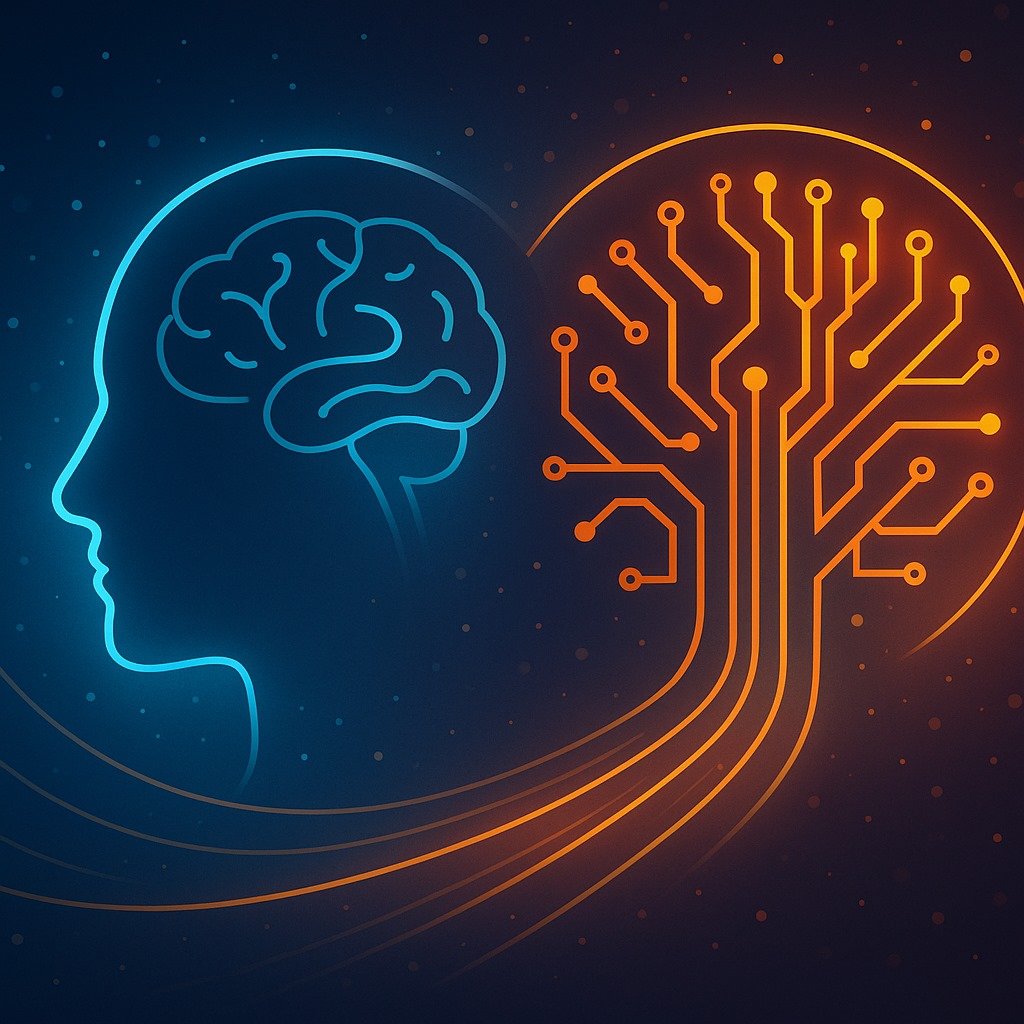In the ever-evolving landscape of artificial intelligence, a new paradigm is emerging: Agentic AI. It’s not a buzzword; it’s a revolutionary leap that can potentially reshape the manner in which machines interact with humans, data, and the world.
Agentic AI is AI that does not merely wait for instructions. Instead, it acts on its own, makes decisions, and executes actions based on user goals. Try to envision a virtual assistant that not only responds to your questions but gets things done, manages workflows, and even learns from feedback. This blog finds out, delves into the tech behind, applications, and potential uses of Agentic AI.
Understanding Agentic AI
Agentic AI is artificial intelligence that exhibits agency — the capacity to propel goal-directed action. Unlike static models that respond to queries, agentic systems understand goals and independently act to realize them.
They aim, learn, perform, and evaluate, often along long processes and several steps. These types of systems mask the line separating narrow AI from overall Artificial General Intelligence (AGI).

Key Characteristics of Agentic AI:
- Autonomy: It works on no constant human guidelines.
- Goal-Directed: Receives upper-level instructions and returns defined output.
- Multi-Step Reasoning: Handles complicated sets of conclusions.
- Learning from Feedback: Gradual improvement through performance over a passage of time.
How Agentic AI Differs from Traditional AI
Traditional AI is great at some tasks but responds reactively. For example, programs like ChatGPT respond to questions but don’t act or long-term processes independently.
Agentic AI, on the other hand, acts proactively. Give it a goal (say, “Make a market research report”), and it will do research, gather data, write the report, and ask for feedback—all with little human interference.
Traditional AI is narrow; agentic AI is strategic.
Traditional AI vs. Agentic AI:
| Features | Traditional AI | Agentic AI |
| Mode | Reactive | Proactive |
| Decision Making | Prompt-Based | Goal- based |
| Autonomy | Low | High |
| Application | Single Task | Complex, multi-step workflows |
| Adaptability | Limited | Learns and adapts |
The Technology Behind Agentic AI
Developments in the relevant domains would allow agentic AI to materialize as follows:
1. Large Language Models (LLMs)
Many current LLMs, such as GPT-4 and Claude, provide a natural framework to establish agentic AI systems. They are trained on vast amounts of data and can presumably learn context, answer the question being asked, and draw evidence across multiple disciplines.
2. Tool-Use APIs
Agentic AI addresses APIs to perform beyond conversation. For example, it can
-Surf the web
-Open spreadsheets
-Send mail
-Run code
3. Memory & State Tracking
In order to accomplish prolonged work, agentic AIs require memory. Modern implementations include short- and long-term memory systems to recall user preference and past behavior.
4. Planning Modules
Embedded planners exist in some agentic systems with the ability to decompose goals into subtasks. These are performed sequentially with checks and retries.
Application of agentic AI
Agentic AI has already been promising across many sectors, and some of the biggest are listed below:
1. Personal Productivity
Agentic AIs such as AutoGPT and SuperAGI are capable of managing calendars, scheduling meetings, and scheduling with contacts via e-mail. They support task delegation, providing mental breathing room.
2. Software Development
AI agents can write code, debug code, test software, and release applications with or without the necessity of developers. GitHub Copilot is a pioneering product that is progressing towards this.
3. Business Automation
Agentic AI can also handle sales processes, customer service, lead generation, and analytics. In these areas, it can learn from new data and continuously optimize campaigns.
4. Research and Writing
Agentic AI is adept at producing reports, summarizing academic articles as it was built to do, or preparing proposals. It may take days or weeks to work on one project.
5. Education
Tutors on the basis of Agentic AI can tailor content to students, track performance, and modify teaching methods.

Benefits of Agentic AI
Agentic AI possesses many advantages over traditional systems:
1. Effectiveness
It can execute various complex repetitive tasks in a time-efficient manner, leading to an optimal use of resources.
2. Scalability
One AI agent can replace any number of humans.
3. Personalization
It learns to respond to user behavior and user preferences for unique or personalized outcomes.
4. Continual Improvement
At least with reinforcement learning or human feedback, these agents can learn over time.
5. Strategic Thinking
They can also plan and be adaptive rather than only reactive.
Challenges and Risks
Despite its promise, Agentic AI is not riskless:
1. Hallucinations
Like other LLMs, it can confidently invent facts.
2. Misalignment
In the absence of careful direction, it can be optimized for the incorrect goals.
3. Overreach
Self-acting agents may act outside their intended limits if guardrails are weak.
4. Security Risks
Interoperability with third-party tools means that such agents must have rigorous cybersecurity measures.
5. Ethical Considerations
What happens when agents mimic human roles too well? Misuse, job displacement, or manipulation are all concerns.

Real-World Examples of Agentic AI
Some projects and applications that leverage agentic principles are given below:
- AutoGPT : An open-source Python application that uses GPT-4 to execute tasks independently.
It can accomplish tasks like building a site or managing a campaign. - BabyAGI: A lightweight framework for running tasks with the assistance of AI. It sets priorities and executes them using tools.
- LangChain Agents
- LangChain : LangChain allows developers to build AI agents with memory, decision-making logic, and tool access.
- Devin AI (Cognition Labs): Devin is the world’s first AI software engineer. It can code, test, and push to GitHub repositories by itself.
Case Studies and Real-World Use Cases
Agentic AI is not theory – it is being created in real businesses and use cases already. Let us go through some spotlight examples that show its potential in real use cases.
1. Marketing Automation with AutoGPT
A marketing agency used AutoGPT to build a digital campaign from scratch.The agent built goals, determined the audience, wrote onto ads, used analytics, and refined the campaign – all in a distinctly human way.
2. AI in Education
An education technology firm created a smart tutor utilizing Agentic AI. The tutor modified lessons to learners, tracked the pace of learning, and delivered personalized feedback – which also saw massive growth in student engagement.
3. Corporate Automation with Devin AI
A company that develops applications used Devin AI to handle quality assurance (QA). The AI agent caught bugs, wrote fixes, and pushed them to GitHub on its own. It helped save time and reduced reliance on human testers.
4. Personal Productivity Tools
Early adopters utilize agentic systems like SuperAGI to automate daily routine tasks like daily to-do lists, respond to email, schedule appointments, and organize a trip. Agents are executive assistants that learn your routines after a while.
5. Content Research & Creation
Academics and writers now outsource document formatting, report writing, and literature review to agentic agents. They carry out commands, edit on drafts, and even cite sources independently.
6. Customer Support and Sales
Follow-ups, lead qualification, and delivering certain messages are all handled by agentic CRM software. Support agents deal with routine tickets, and problematic ones are sent to human reps.
7. Programming Assistants
Agentic AI agents are being used more and more to write full web applications. From backend functionality to frontend visual design, the agents write and test code with minimal developer input, so the development process is faster.
The Future of Agentic AI
In the next 3–5 years, agentic AI must:
- Be integrated with operating systems.
- Power the home ecosystems.
- Run workflows of the type needed in large enterprises.
- Be applied to law, finance, and medicine at an automatic scale.
Organizations and governments must prepare their employees for the changes that will bring about.
Agentic AI must build toward AGI. It is the step that bridges task-specific AI with truly intelligent machines.
Future Predictions and Trends
As Agentic AI continues to evolve, its impact in the long term on industries, work, and society will be tremendous. The following are seven major trends that show how the future is headed.
1. Multi-Agent Collaboration
In the near future, we’ll see networks of AI agents working together like human teams. Perhaps an agent can do research, another can do execution, and a third can do evaluation — resulting in more complicated and collaborative outcomes.
2. Embedded AI in Business Practices
You should expect agentic AI to be embedded in business practices in a matter of years – from customer success to logistics to HR. These in-place agents will run operations behind the scenes, increasing scalability and efficiency.
3. Personal AI Assistants for Everyone
Everyone will have their own permanent AI assistant within a few years. These agents will remember your routines, goals, and tastes — helping with money, exercise, and even content creation.
4. Growth of AI Governance and Ethics
As these agents become more prevalent, governments will create laws that constrain their actions. Issues of AI transparency, safety, and alignment with human values will become global priorities.
5. New Titles and Skills
Work will seem different. AI agent trainer, prompt engineer, AI ethicist will be an everyday sort of thing. Soft skills like creativity and emotional intelligence will become more important than ever.
6. Human and AI Hybrid Creativity
Agentic AI will shake things up in the world of creativity. Scientists, artists, and businesspeople will partner with AI to combine machine intelligence and human intuition, resulting in new levels of innovation and speed of innovation that have never been seen.
7. AI-Enabled Learning
K-12 and post-secondary education institutions will move to AI education. Students will be taught under adaptive learning agents that identify in real-time how students learn best, thus learning will be more fun, personalized, and better too.
Conclusion:
Agentic AI is not a matter of potentiality — it’s present day reality and the future evolution. As artificial intelligence moves from reactive, deterministic tools to autonomous agents, we are witnessing the near horizon of an enormous shift in many industries and our life.
These intelligent systems are currently automating workflows, assisting with creative endeavors, and powering organizations. Agentic AI is proving value right now in marketing and education, and creative and developer tools, and businesses that employ them.
The true power of Agentic AI is autonomy, learning, and taking initiative — the influential capabilities that traditional AI does not possess. As agents develop, probably whole ecosystems will develop to support collaboration between humans and machines.
However, with capability comes responsibility. Ethical frameworks, security protocols, and good oversight are necessary to help us ensure agentic systems continue to align with human values.
In the end, the world of agentic AI lies at the nexus of how we work, learn and innovate. Agentic AI is not a mere tool — it is a co-worker, a co-creator, and a strategic collaborator.
I encourage business leaders, developers, educators and everyday users to explore agentic AI now. The future will be created those who know, engage with and evolve with transformational technologies like this.
